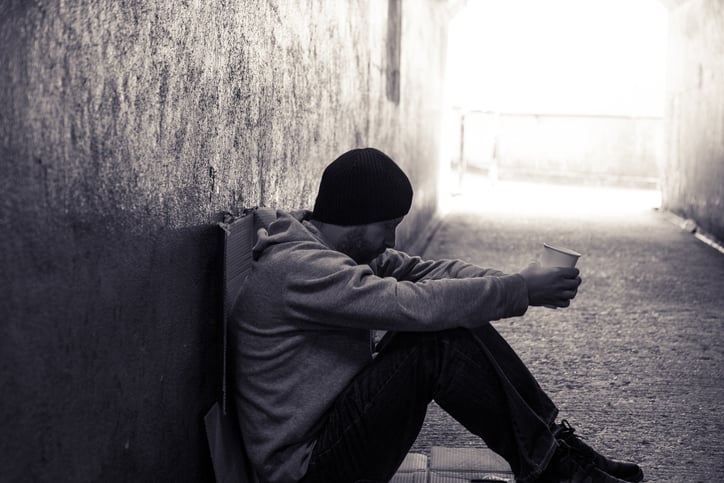
The holidays often bring an increase in depression for adolescents, often because of loneliness or feeling like others are happy, even if they are not. This time of the year is also when Seasonal Affective Disorder (SAD) kicks in due to shorter days and less sunlight. There is also a significant increase in alcohol consumption, which also accounts for the increases in alcohol-related deaths.
While it is largely assumed that the numbers of suicides and attempted suicides are also increased around the holidays, a review of data published in Innovations in Clinical Neuroscience demonstrated that there are actually fewer suicides and suicide attempts just before Christmas, with a rebound effect of up to a work 40% increase of suicides and attempts following the New Year. This is an important trend to note as you are working with adolescents with substance abuse and mental health diagnoses.
If Your Client Is Not Communicating, How Can You Detect Depression?
One of the difficulties in detecting depression in a client is when they are not communicating well. If you have cooperation from family, friends, teachers, and others who can all give you information about changes in mood, sleep, eating habits, and more, then the diagnosis is easier. But if the client has been away from home and in treatment, it can be difficult to discern if they are depressed or not.
Working closely with doctors, clinicians, nurses, and other professionals can help track sleep and eating patterns as well as mood changes. If the patient is taking medications or has other health issues, take into account the side effects of those, as well. Without effective communication from the client themselves, it is important to watch closely for changes that may indicate a change from depression to thoughts of suicide.
What Are the Signs of Suicidality to Watch For?
According to an article entitled “Suicide Screening and Prevention” updated this year, at least one in seven adolescents has experienced suicidal ideation at some point. Suicidality is even more common among adolescents with substance abuse or mental health diagnoses. Some of the signs to watch for include:
- Sudden changes in mood, sometimes positively or showing compliance
- Increased anxiety or fixation with death, negative world events, etc.
- Sudden changes in sleep or diet
- Signs of paranoia, hallucinations, or delusions
- Apathy or lack of pleasure with normal activities
- Recent changes in medications
- Speaking about the past; speaking about themselves as unimportant
- Actions or expressions of hopelessness or helplessness
- Contacting everyone they know or saying goodbye
When Do You Recommend a More Restrictive Treatment Environment?
When suicidality is suspected or confirmed through a note, verbal expressions, or attempts to access the means to commit suicide, it is time to recommend a more restrictive treatment environment such as an extended residential care facility where the adolescent can have supervision around the clock.
Keep in mind that it is important to differentiate between self-harm, such as cutting, which is often used as a coping mechanism, and an actual suicide attempt. Even if hospitalization for safety reasons is the protocol in both situations, the clinical approach should be different. Self-harm is an indication of inner pain or unresolved trauma, while suicide is most often a result of depression and actually wanting to die.
How to Protect Your Clients During the Holidays
When adolescents are at higher risk for depression or suicide, they may need to check in more often with mental health professionals or seek a higher level of care. Not only does this provide more supervision and awareness of their mental state or potential for relapse, but it allows mental health professionals to reinforce coping methods and skills to guide them toward more self-efficacy as well.
Checking in more often does not mean more work for you. In fact, it is a good idea to find more people to add to their support network and work as a team to create a bigger safety net. Particularly when there are past suicide attempts, suspected depression, or a known familial or personal risk, more support through the New Year will help ensure their safety.
Monitoring Your Own Moods at This Time of the Year
While treating your adolescent clients with compassion and empathy, remember to watch your own mental health. Monitor yourself for signs of depression or burnout, and engage increased support and self-care for yourself. The stress of the holidays can just as easily sneak up on mental health care providers, particularly while dealing with adolescents with such challenging behaviors and situations. Remembering to monitor your own moods and recovery can help ensure your clients get the best support from you.
Understanding that the holidays can be challenging for both your clients and yourself, you can monitor mental health and behavior more closely to catch depression or suicidality early. Sometimes, an increase in supervision or a more restrictive environment is the safest way to prevent suicide, major depression, or relapse. The extended residential program at Sustain Recovery is a great alternative to the typical length programs. We offer the clinical supervision and structure needed to help adolescents with co-occurring substance abuse and mental health diagnoses. At Sustain Recovery, we are passionate about what we do and strict but compassionate with those we serve. If you have a client who has relapsed or struggled with less restrictive programs, call us at (949) 407-9052 to see if our program is the right fit for them. We are committed to helping them not only through the holidays but also by connecting them with people and resources and helping them transition back home after treatment.






